.
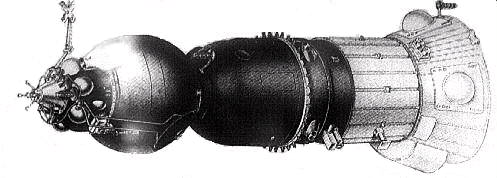
.
Above: Two artists’ impressions of the LOK spacecraft. Note that there are significant differences between the two. The vehicle would have no doubt been clothed in the ubiquitous green thermal blankets of the Soyuz.
(Bottom image courtesy Mark Wade)
.
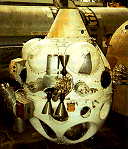
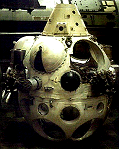
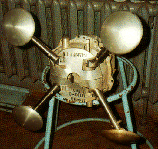
.
Rendezvous & Docking
(Thumbnails – click for full size image)
Above Left & Center: Two images ~90 degrees apart of the RCS/docking section, mounted on the nose of the vehicle.
Right: Docking probe, which was mounted on the very tip of the nose of the vehicle. (see text below)
(Center photo courtesy Mark Wade)
.

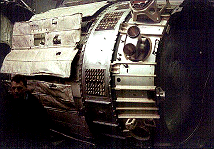
.
LOK Museum Artifacts
(Thumbnails – click for full size image)
Above Left: Literally, a cutaway mockup of the LOK Orbital and Reentry modules.
Right: Service module, looking aft from the area where this section and the reentry module interfaced.
(Right photo courtesy Mark Wade)
The LOK spacecraft was roughly equivalent to the Apollo Command/Service Module (CSM) “mother ship”. Basically a souped-up Soyuz, it served as transport vehicle & living quarters for the 2 man lunar crew to and from the moon. The middle section, just like Soyuz, was used during launch and reentry, and for most of the vehicle control functions. Also note the rear instrument section, which has been elongated from the basic Soyuz design to allow for extra propellants, and the fact that no solar panels were used (for those readers who like to track Soyuz variants). Electrical power was supplied by fuel cells. The odd looking apparatus on the nose of the vehicle was used for reaction control and docking. 4 small metal fingers were used to guide the docking probe, which could snap into any one of 108 small hexagonal holes in the “Kontact” docking plate on the top of the LK ascent stage. This enabled a docking to take place no matter where on the LK docking plate the LOK managed to make contact. This design was probably incorporated because of a lack of precision radar equipment.
